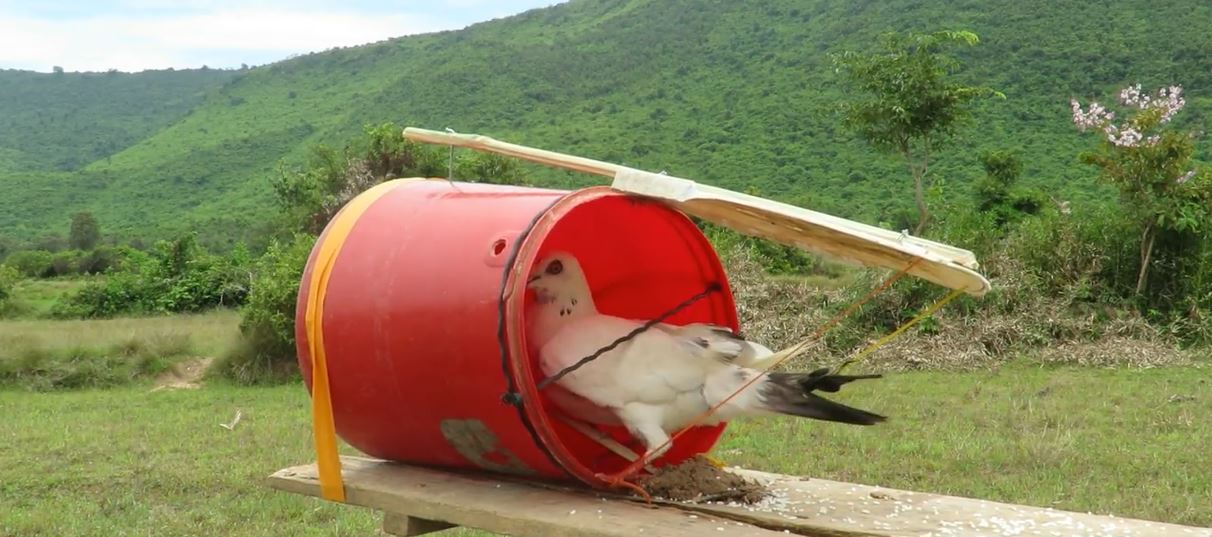How To Trap Wild Animals

There are many different methods of dealing with wild animals on your property. Sometimes you can convince them to leave with scents they don't like or loud noises, but that won't always work. At times, you may need to trap the animal so it can be relocated instead. You can either do this yourself or hire a professional and the exact method will depend on the type of trap you choose to use. There are both live and kill traps available, with the obvious difference being that kill traps are designed to kill the animal instantly, while live traps can be used for relocation.
Special Considerations
Before starting the process of trapping an animal on your property, you will want to keep in mind that the solution may only be temporary. Unless you relocate the animal at a very far distance and take steps to prevent it (or another animal) from coming back, it will only be a temporary solution. Certain animals may even have a homing instinct that will lead them back to your home. Because of this, trapping works best in the case of an animal that is actually within your home as you will have the chance to seal their entry points before the animal, or another of the same species, returns.
Another very important consideration is the number of animals on your property and whether there are baby animals. If there are baby animals, you will need to wait until they grow to trap any wildlife. If you separate the babies from the mothers, you are essentially sentencing the baby animals to death as they will be unable to fend for themselves. To make matter worse, the mother will probably be worried about her babies. This means that if babies are present, you should wait a few months before trapping the wild animals, at which point it should be safe and humane to do so
Live Cage Traps
The ideal trap to use is a live cage trap, which is typically made from wire. You can find a wide range of sizes and manufacturers, allowing you to pick the right cage for your particular wildlife. To make it easier, the majority of retailers for these cages will indicate the ideal animal for each cage.
There are also various trap configurations for live cage ones, including both those that are solid/rigid and those which are collapsible. The collapsible traps take up less storage room, but the rigid ones are sturdier. You can also select a trap with one or two doors, and although two-door traps cost more, they make releasing the animal easier.
To use a live cage trap effectively, you want to place the bait behind its trigger mechanism. Also consider adding soil or leaves over the wire mesh on the bottom so of the cage so it blends into the environment. No matter the style of trap, you always want to put it on a level surface to reduce the risk of injury to the wild animal.
Sherman Traps
Sherman traps are another humane trap available in a range of sizes and either folding or non-folding varieties. These traps are different in that they are solid aluminum or steel. To ensure that the trapped animal can breathe and be in a comfortable temperature, the walls and doors can be perforated. You will want to bait one of these traps several days, leaving the door open for the first few. This helps the animal become comfortable with it and trust the cage, which is important because unlike live cage traps, it won't blend into the surroundings.
Glueboards
Glueboards are designed for smaller animals, such as rodents. Simply place the board in an area the rodent will pass and it will get stuck. You can then take the glueboard with the rodent to a desired location and free the animal using vegetable oil, which won't harm the animal.
Steel Leg-Hold Traps
A final non-kill trapping method is a steel leg-hold trap, but keep in mind that some areas regulate their use. These are ideal for larger animals, such as foxes, beavers, and coyotes and you have to check them regularly. Their padded jaws help them remain more humane than some other options.
What To Do After Trapping
There are a few main options after you trap the wild animal. The most common is to take it to a new area and release it. Many experts don't recommend this as the unfamiliar environment can be disorienting and make it challenging to hide from predators or find food. Because of this, it is crucial to release the animal in an area with plenty of shelter and food.
The alternative option works if the animal was inside a building. In this case, you can trap the animal and leave it in the cage while you quickly seal up its entry points. Once they are sealed, you can release the animal as it won't be able to get inside your home.
Read the Pest Wildlife Home Page page for helpful information and to learn more about How To Trap Wild Animals

